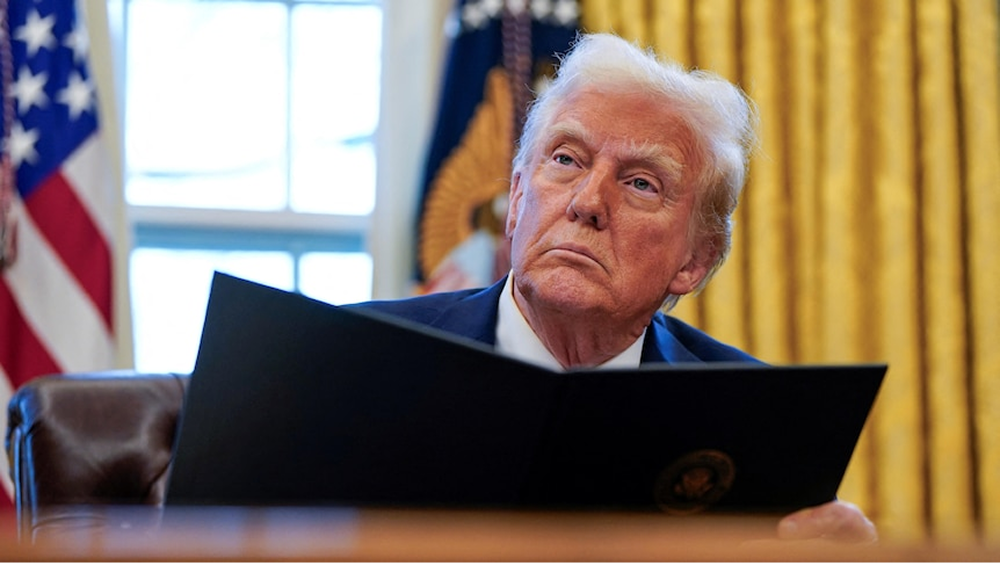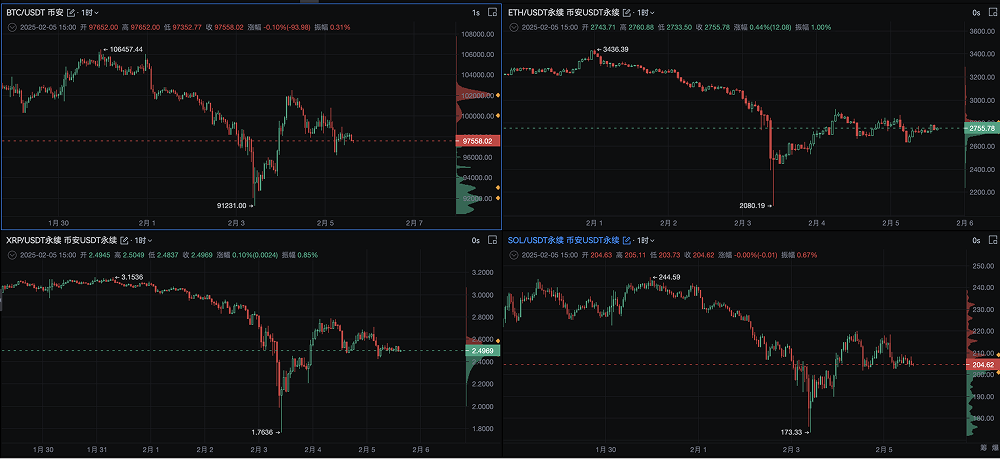Overview of Tariff Policy
On February 1, 2025, Trump signed an executive order announcing a 10% and 25% tariff on all imported goods from China, Mexico, and Canada, respectively. This move aims to address the U.S. trade deficit and tackle illegal immigration and the fentanyl crisis. However, this policy has raised concerns about an escalation of the global trade war, with various countries indicating they will take countermeasures.
This tariff policy will have a significant impact on the global economy and financial markets. The U.S. dollar exchange rate may fluctuate, commodity prices may rise, and international supply chains will be affected. Meanwhile, the cryptocurrency market, as an emerging global asset class, may experience greater volatility in the context of this trade war.

Initial Reactions of the Cryptocurrency Market
Following the announcement of the tariff policy, the cryptocurrency market experienced noticeable volatility. Bitcoin's price fell to $91,231; Ethereum dropped to $2,080; and XRP decreased to $1.7636. Analysts pointed out that as a high-risk asset, cryptocurrencies often decline when market uncertainty increases.
Additionally, trading volume surged in the short term, indicating a cautious market sentiment. Some institutional investors may choose to temporarily withdraw from the cryptocurrency market to avoid uncertainty risks.

Multiple Impacts of Tariff Policy on the Cryptocurrency Market
- Market Sentiment and Risk Appetite
The implementation of the tariff policy has intensified global trade tensions, increasing market uncertainty. In a rising risk-averse environment, investors may reduce their allocation to high-risk assets, including cryptocurrencies. This has led to a decline in the prices of major cryptocurrencies like Bitcoin.
On the other hand, some investors may view cryptocurrencies as a tool to hedge against traditional market risks, especially if the dollar weakens due to trade frictions. This contradictory factor may lead to high volatility in the cryptocurrency market in the short term.
- Changes in the Macroeconomic Environment
The increase in tariffs may lead to rising commodity prices, which in turn could push up inflation levels. To combat inflation, the Federal Reserve may adopt a tightening monetary policy, such as raising interest rates. This would increase the opportunity cost of holding non-yielding assets (like gold and cryptocurrencies), thereby suppressing market demand for cryptocurrencies.
However, if the trade war escalates further, leading to a slowdown or even recession in global economic growth, central banks may revert to accommodative monetary policies. In this scenario, cryptocurrencies may see a new round of capital inflows.
- Capital Flows and Regulatory Environment
The tariff policy may trigger a reallocation of capital globally. Some investors may seek to avoid markets affected by tariffs and turn to emerging assets like cryptocurrencies. However, different countries have varying regulatory attitudes towards cryptocurrencies, and policy uncertainty may affect investor confidence and capital flows.
For example, the Chinese government may strengthen capital controls, restricting funds from flowing out of the domestic market through cryptocurrency channels. Meanwhile, regulatory agencies in the U.S. and Europe may accelerate regulations on stablecoins and exchanges, complicating capital flows in the cryptocurrency market.
- Impact of Dollar Status and Stablecoins
As the U.S. intensifies trade protectionism, some countries may seek to reduce their reliance on the dollar. Digital assets like stablecoins (such as USDT, USDC) may become new options for international trade and settlement, increasing their market demand.
On the other hand, if the dollar weakens due to trade frictions, some investors may choose Bitcoin as a hedging tool, supporting its price.
Long-term Impacts and Potential Opportunities
Although the tariff policy has brought volatility to the cryptocurrency market in the short term, it may also present new opportunities in the long run.
- Trade tensions may prompt some countries and businesses to seek decentralized trading methods to bypass the restrictions of the traditional financial system. Cryptocurrencies, as decentralized assets, may gain more application scenarios and recognition in this process.
- With increasing challenges to capital controls and dollar hegemony, decentralized finance (DeFi) and cross-border payment solutions may encounter new development opportunities.
- Some countries may consider launching central bank digital currencies (CBDCs) to reduce reliance on traditional international settlement systems, promoting the development of the global digital economy.
Expert Opinions
Ryan Lee, an analyst at Bitget Research, stated that Trump's tariff policy could be a "double-edged sword" for the cryptocurrency market. On one hand, the U.S. trade war policy may weaken the dollar's global dominance, thereby enhancing Bitcoin's hedging properties; on the other hand, short-term market risk aversion may lead to a sell-off in cryptocurrencies.
Analysts at cryptocurrency research firm Messari noted that the intensification of global trade frictions may encourage investors to use crypto assets more broadly for value storage and cross-border transactions, but market uncertainty remains high.
Investor Response Strategies
In the face of the uncertainty brought by the tariff policy, investors should remain cautious and closely monitor global trade dynamics and regulatory policies in various countries. In terms of asset allocation, it is advisable to diversify investments to reduce exposure to a single asset class. Additionally, investors should pay attention to the technological developments and application prospects of the cryptocurrency market to seize potential investment opportunities.
Conclusion
Trump's latest tariff policy has had a complex and far-reaching impact on the cryptocurrency market. Investors need to examine the challenges and opportunities presented by this policy from multiple angles and develop corresponding investment strategies to achieve stable returns in an uncertain market environment.
Disclaimer: The above content does not constitute investment advice.
If you have any questions, you can contact us through the following official channels:
AiCoin Official Website: www.aicoin.com
Telegram: t.me/aicoincn
Twitter: x.com/AICoincom
Email: support@aicoin.com
Group Chat: Customer Service Yingying、Customer Service KK
免责声明:本文章仅代表作者个人观点,不代表本平台的立场和观点。本文章仅供信息分享,不构成对任何人的任何投资建议。用户与作者之间的任何争议,与本平台无关。如网页中刊载的文章或图片涉及侵权,请提供相关的权利证明和身份证明发送邮件到support@aicoin.com,本平台相关工作人员将会进行核查。




